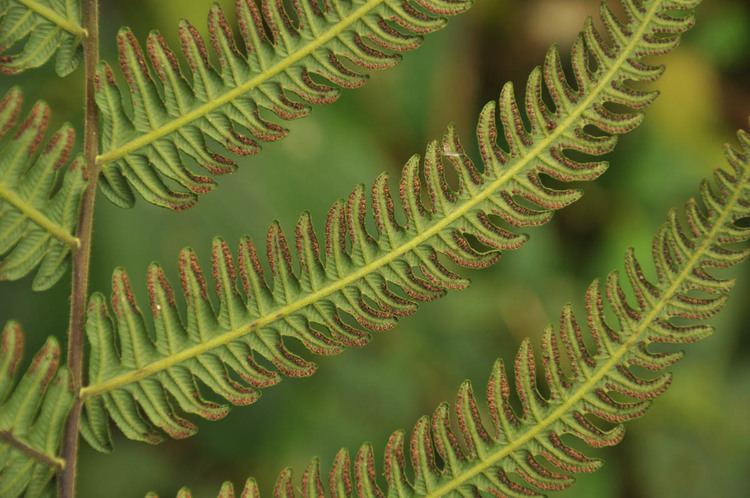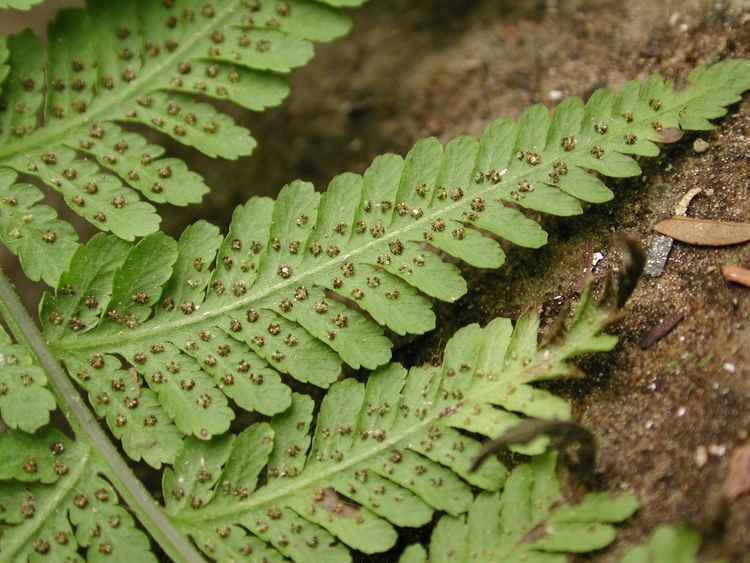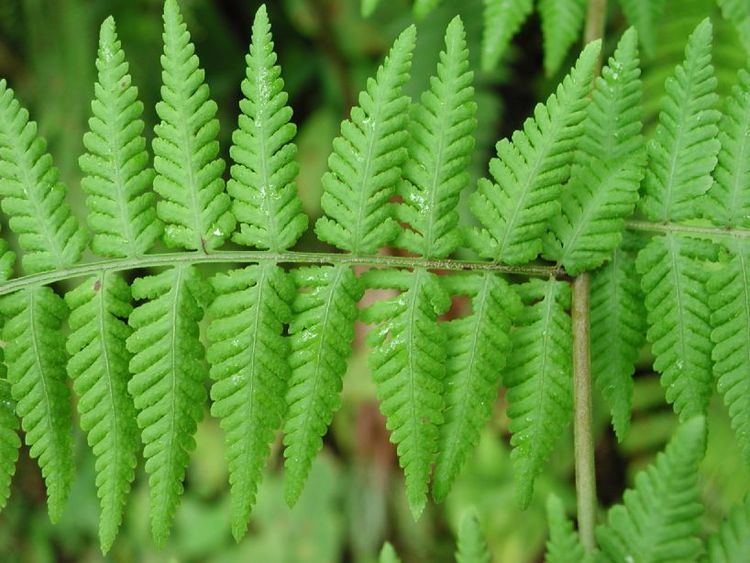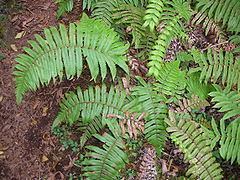Division Pteridophyta Scientific name Thelypteridaceae Rank Family | ||
 | ||
Lower classifications Thelypteris palustris, Phegopteris connectilis, Thelypteris noveboracensis, Phegopteris hexagonoptera | ||
Thelypteris species maiden ferns samambaia do mato thelypteridaceae
Thelypteridaceae is a family of about 900 species of ferns in the eupolypods II clade of the order Polypodiales, in the class Polypodiopsida.
Contents
- Thelypteris species maiden ferns samambaia do mato thelypteridaceae
- Classification
- Phylogenic relationships
- References

The ferns are terrestrial, with the exception of a few which are lithophytes (grow on rocks). The bulk of the species are tropical, although there are a number of temperate species.

These ferns typically have creeping rhizomes. The fronds are simply pinnate to pinnate-pinnatifid. There is either no frond dimorphism or only mild dimorphism, either open venation or very simple anastomosing. The sori are mostly reniform in shape and have indusia, except for the Phegopteris group.

Classification

At one time, all thelypterioid ferns were included in the genus Dryopteris because of the sorus shape. However, there are a great many differences between the groups, and these plants are now segregated in their own family.
Some researchers include the entire family Thelypteridaceae in the genus Thelypteris; others divide the family into as many as 30 genera. An intermediate position is to place the bulk in Thelypteris (which can then be divided into subgenera and sections corresponding to the genera of other authors) but to separate out Phegopteris and Macrothelypteris. Another choice is to divide the family into a half a dozen or so genera.
This family includes several complexes of species that are difficult to distinguish, and seem to represent a remarkable evolutionary radiation.
Recent genetic evidence shows that the family is clearly monophyletic. The same genetic studies show that the traditional genus Phegopteris is, in fact, a clearly segregate group that diverges at the very base of the family tree. In fact, this particular clade also includes the genera Pseudophegopteris and Macrothelypteris, which are here included in the larger genus Phegopteris. Similarly, Coryphopteris is included here in the genus Metathelypteris, Parathelypteris is included in Amauropelta, and a large group of genera are included in Cyclosorus.
The most recent molecular phylogenetic study divides the family into two major clades:
Phylogenic relationships
The following diagram for the eupolypods II, based on Lehtonen, 2011, and Rothfels & al., 2012, shows a likely phylogenic relationship between the Thelypteridaceae and the other families of the eupolypods II clade.
